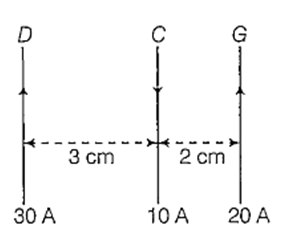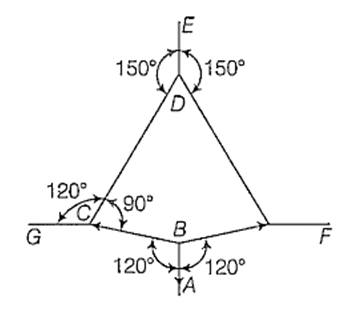 Multiple Choice Questions
Multiple Choice QuestionsA ball of mass 0.5 kg moving with a velocity of 2 ms-1 strikes a wall normally and bounces back with the same speed. If the time of contact between the ball and wall is 10-3 s, the average force exerted by the wall on the ball is
1125 N
1000 N
500 N
2000 N
Which of the following sets of concurrent forces may be in equilibrium ?
F1 = 3 N, F2 = 5 N, F3 = 1 N
F1 = 3 N, F2 = 5 N, F3 = 9 N
F1 = 3 N, F2 = 5 N, F3 = 6 N
F1 = 3 N, F2 = 2 N, F3 = 15 N
Two equal forces (P each) act at a point inclined to each other at an angle of120°. The magnitude of their resultant is
P/2
P/4
P
2P
A student unable to answer a question on Newton's laws of motion attempts to pull himself up by tugging on his hair. He will not succeed
as the force exerted is small
the frictional force while gripping, is small
Newton's law of inertia is not applicable to living beings
as the force applied is internal to the system
Three long, straight parallel wires, carrying current, are arranged as shown in figure. The force experienced by a 25 cm length of wire C is

5.2 × 103 N
2.5 × 10-3 N
zero
1.5 × 10-3 N
The adjacent figure is the part of a horizontally stretched net. Section AB is stretched with a force of 10 N. The tensions in the sections BC and BF are

10 N, 11 N
10 N, 6 N
10 N, 10 N
can't be calculated due to insufficient data
A body of mass 4 kg is accelerated upon by a constant force, travels a distance of 5 m in the first second and a distance of 2 m in the third second. The force acting on the body is
2 N
4 N
6 N
8 N
A body of mass 0.05 kg is observed to fall with an acceleration of 9.5 ms-2. The opposing force of air on the body is (g = 9.8 ms-2)
0.015 N
0.15 N
0.030 N
zero
Three concurrent co-planar forces 1 N, 2 N and 3 N acting along different directions on a body
can keep the body in equilibrium if 2 N and 3 N act at right angle
can keep the body in equilibrium if 1 N and 2 N act at right angle
cannot keep the body in equilibrium
can keep the body in equilibrium in 1 N and 3 N act at an acute angle
Two rectangular blocks A and B of masses 2 kg and 3 kg respectively are connected by a spring of spring constant 10.8 Nm-1 and are placed on a frictionless horizontal surface. The block A was given an initial velocity of 0.15 ms-1. in the direction shown in the figure. The maximum compression of the spring during the motion is

0.01 m
0.02 m
0.05 m
0.03 m
